DDR5 12.8Gbps MRDIMM Driving Innovation in AI and HPC
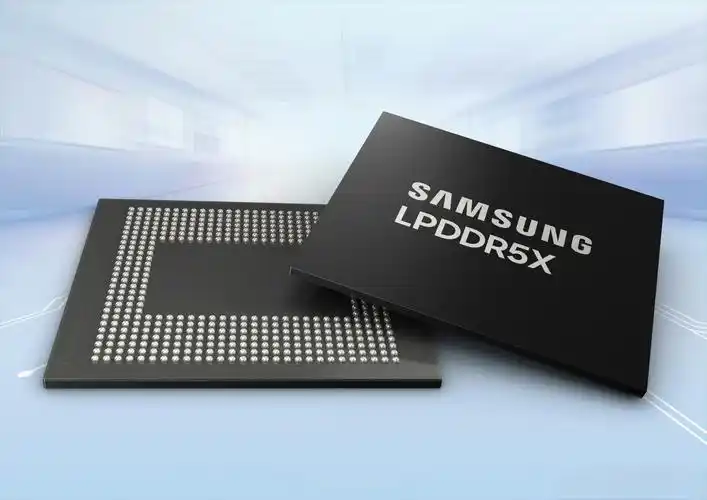
The DDR5 12.8Gbps MRDIMM IP: powering the future of AI, is redefining memory solutions for modern computing. Its design meets the growing demand for efficient data handling in AI and HPC. This memory technology delivers unmatched server performance by doubling data rates while maintaining reliability. It ensures rapid processing, enabling breakthrough advancements in AI workloads. With its robust architecture, DDR5 12.8Gbps MRDIMM IP optimizes memory for high-speed environments. The benefits extend beyond speed, offering energy efficiency and scalability. As DDR memory supply evolves, this innovation sets a new benchmark for server performance across industries.
Key Takeaways
DDR5 MRDIMM tech makes data move twice as fast. This helps AI and HPC work quicker with more memory speed.
It uses less energy but still works great. This makes it a smart and eco-friendly choice for big data centers.
DDR5 MRDIMM can handle tough jobs easily. It fits well into advanced computer systems.
It has lower delays, so tasks finish faster. This is important for training AI and running big computer simulations.
Using DDR5 MRDIMM helps companies create new ideas in AI and HPC. It also prepares them for future tech improvements.
DDR5 MRDIMM Technology: A New Era in Memory Solutions
What Makes DDR5 MRDIMM Unique?
DDR5 MRDIMM introduces groundbreaking advancements in memory technology, setting it apart from traditional DDR5-based memory modules. Its unique design elements include:
Parallel Rank Access: MRDIMMs activate two ranks of DRAM simultaneously, doubling data throughput per channel.
On-DIMM Buffering: This feature enhances signal integrity and data transfer efficiency, which standard RDIMMs lack.
Multiplexing Data Streams: By multiplexing data streams, MRDIMMs achieve higher memory bandwidth, enabling faster and more efficient data handling.
These innovations allow MRDIMMs to deliver exceptional performance, making them ideal for applications requiring high bandwidth and low latency. Leading server manufacturers, including Lenovo and Dell, are already validating MRDIMMs in their next-generation platforms, highlighting their industry-wide adoption.
Key Features of DDR5 12.8Gbps MRDIMM IP
The DDR5 12.8Gbps MRDIMM IP offers a silicon-proven architecture designed for next-generation SoCs and chiplets. Key features include:
Ultra-Low Latency Encryption: Ensures secure and rapid data processing.
Advanced RAS Features: Improves reliability, availability, and serviceability for enterprise applications.
Flexible Integration: Supports precise tuning of power and performance for diverse workloads.
High Data Rates: Achieves a best-in-class 12.8Gbps, doubling the bandwidth of current DDR5 6400 Mbps DRAM parts.
This architecture is validated on the TSMC N3 process and is already in use by leading AI and HPC customers. Its scalability and adaptability make it a cornerstone for future memory solutions.
How MR-DIMM Enhances Server Performance
MRDIMMs significantly enhance server performance by addressing critical bottlenecks in memory bandwidth and latency. Performance metrics demonstrate:
Bandwidth Gains: MRDIMMs double the peak bandwidth of a memory channel, achieving 50–60+ GB/s per slot compared to 25–30 GB/s for traditional DDR5 DIMMs.
Latency Improvements: Loaded latency is reduced by up to 40%, improving responsiveness for memory-intensive applications.
Power Efficiency: Higher performance is delivered at lower power consumption, reducing energy per task.
Benchmark data further illustrates these enhancements. For example, MRDIMMs provide a 1.31x speedup in OpenFOAM workloads and a 1.2x to 1.7x improvement in Apache Spark performance, depending on capacity. These gains translate to faster processing and better resource utilization, making MRDIMMs indispensable for AI and HPC environments.
Performance Gains with DDR5 MRDIMM
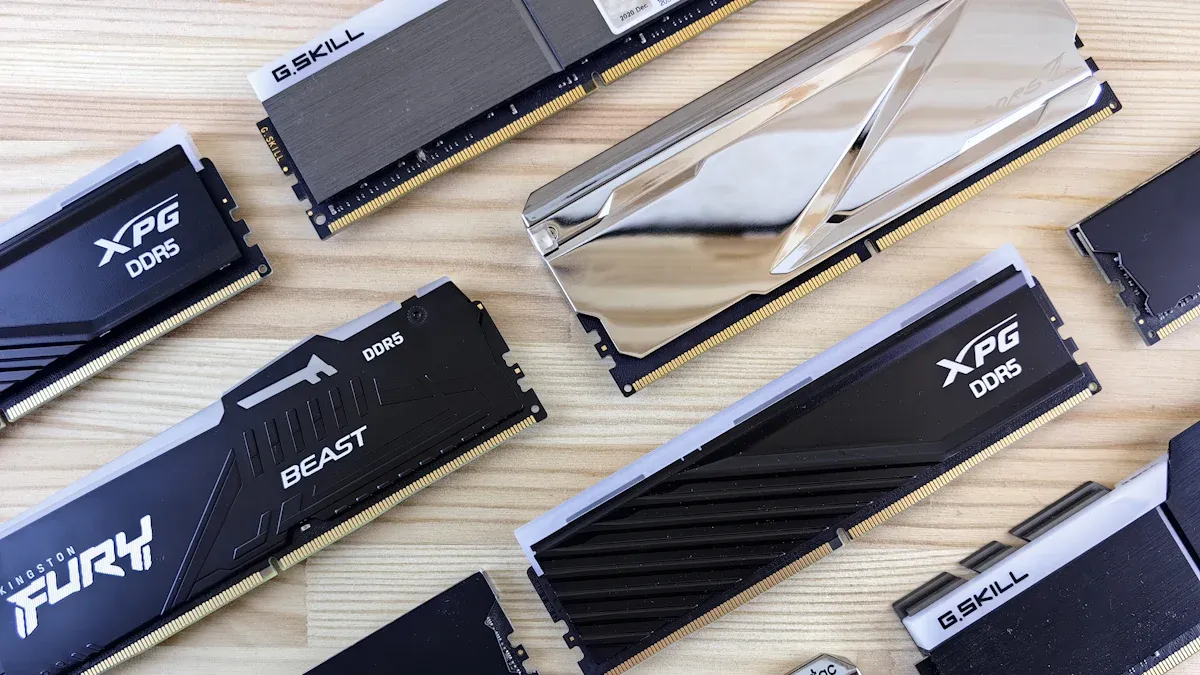
Doubling Data Rates: Speed and Bandwidth
DDR5 MRDIMM technology delivers a significant leap in memory bandwidth, setting a new standard for high-performance computing. By leveraging multiplexed rank access and on-DIMM buffering, it achieves effective memory speeds of up to 8,800 MT/s. This represents a substantial improvement over traditional DDR5 modules, which typically operate at speeds between 4,800 and 6,400 MT/s. The result is a bandwidth boost of up to 66% compared to DDR5-4800 modules, enabling faster data transfer and processing.
The aggregated performance data highlights the transformative impact of DDR5 MRDIMM on memory bandwidth. For instance:
Metric | Value |
|---|---|
Effective Memory Speed | 8,800 MT/s |
Typical DDR5 Module Speed | 4,800–6,400 MT/s |
Increase in Effective Bandwidth | Up to 39% over RDIMMs |
Bandwidth of MCR DIMM | 8.0 Gbps per pin |
Increase over DDR5-4800 | 66% more bandwidth |
HPC Workload Performance Gain | 2.3×–3.1× higher performance |
These advancements translate into tangible performance increases for AI and HPC workloads. Applications requiring high memory bandwidth, such as real-time data analytics and AI model training, benefit significantly from this technology. The ability to handle larger datasets with reduced bottlenecks ensures that DDR5 MRDIMM remains a critical enabler for next-generation computing.
Energy Efficiency and Low Latency
DDR5 MRDIMM not only excels in speed but also redefines energy efficiency and latency performance. Its innovative design reduces energy consumption per task, making it a sustainable choice for data centers and enterprise applications. For example:
DDR5 MRDIMM technology consumes less power per operation compared to traditional DIMMs.
A 256GB MR-DIMM using 32Gb DRAM dies operates within the same power envelope as a 128GB module with 16Gb dies, doubling capacity without increasing energy usage.
The tall MR-DIMM form factor enhances cooling efficiency, lowering DRAM temperatures by approximately 20°C. This reduces throttling and improves overall system performance.
Loaded latency for a 128GB MR-DIMM at 8,800 MT/s is up to 40% lower than that of a 128GB 6,400 MT/s RDIMM, ensuring lower memory latency and faster responsiveness under heavy workloads.
These features make DDR5 MRDIMM an ideal solution for environments where energy efficiency and low latency are paramount. By optimizing power usage and reducing latency, it supports the growing demand for sustainable and high-performing memory solutions in AI and HPC.
Scalability for AI and HPC Applications
The scalability of DDR5 MRDIMM makes it a cornerstone for AI and HPC applications. Its ability to support complex workloads and large-scale systems ensures seamless integration into advanced computing environments. Performance metrics from real-world configurations demonstrate its effectiveness:
System Configuration | Total Cores | Total AIUCpm | Memory Configuration | TDP |
|---|---|---|---|---|
2P AMD EPYC 9965 | 384 | 6067.53 | 1.5TB 24x64GB DDR5-6400 | 500W |
2P AMD EPYC 9755 | 256 | 4073.42 | 1.5TB 24x64GB DDR5-6400 | 500W |
2P Intel Xeon 6980P | 256 | 3550.50 | 1.5TB 24x64GB DDR5-6400 | 500W |
Key observations include:
The AMD EPYC 9965 system outperformed the Intel Xeon 6980P in AI throughput tests, achieving 6067.53 Total AIUCpm compared to 3550.50 for the Intel system.
Specific benchmarks, such as wrf-2.5, showed a ~1.15x performance increase for AMD EPYC systems over Intel Xeon systems.
These results underscore the scalability of DDR5 MRDIMM in handling demanding AI and HPC workloads. Its ability to support high core counts and large memory configurations ensures that it can meet the needs of modern computing environments. By providing a scalable and efficient memory solution, DDR5 MRDIMM empowers organizations to push the boundaries of innovation in AI and HPC.
Real-World Applications in AI and HPC
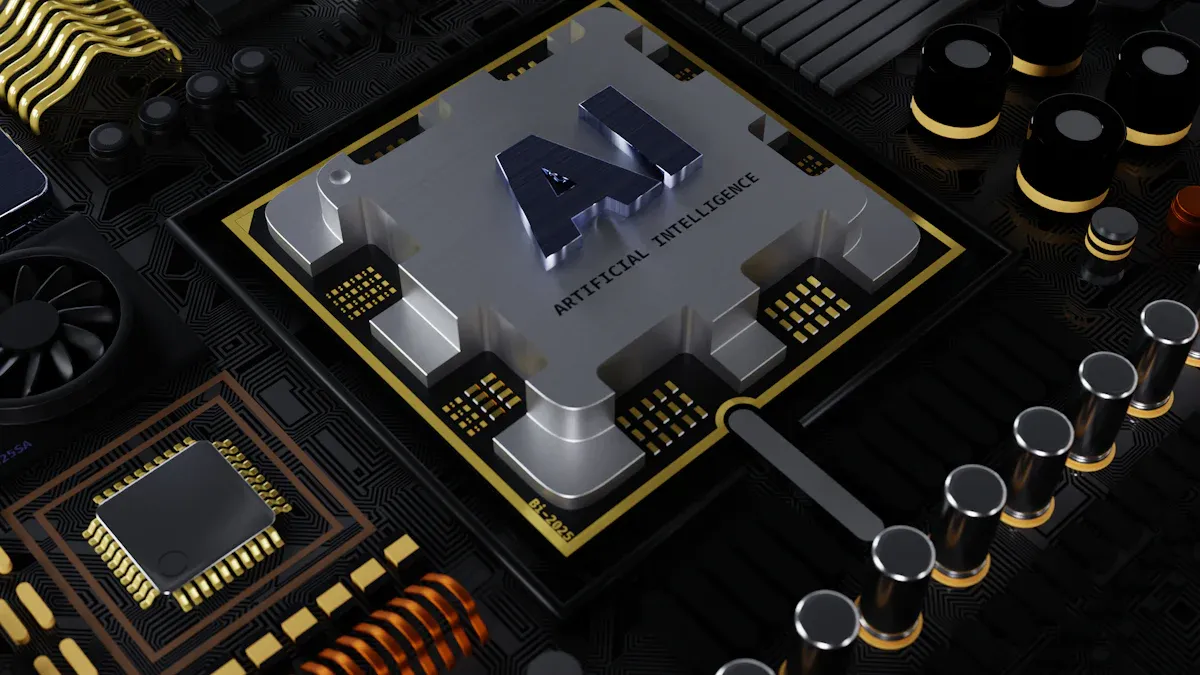
Benchmarks and Performance Metrics
DDR5 MRDIMM demonstrates exceptional performance across various computing environments, as evidenced by benchmark tests and metrics. Its ability to deliver higher bandwidth and lower latency makes it a preferred choice for memory-intensive applications. Comparative data highlights the following:
Metric | MR-DIMM Performance | RDIMM Performance |
|---|---|---|
Theoretical Bandwidth | Up to 60+ GB/s per slot | ~25–30 GB/s per slot |
Effective Bandwidth | ~39% higher at 8800 MT/s | 6400 MT/s |
Loaded Latency | Up to 40% lower than 6400 MT/s RDIMM | 6400 MT/s |
Bus Efficiency | Over 15% better bus utilization | N/A |
Power Efficiency | Lower energy per task | Higher energy at high speeds |
These metrics underscore the transformative impact of MRDIMM technology on memory bandwidth and latency. MRDIMMs double the peak bandwidth of a memory channel, achieving up to 60+ GB/s per slot compared to 25–30 GB/s for RDIMMs. They also reduce loaded latency by up to 40%, ensuring faster response times for applications with heavy memory traffic. Additionally, MRDIMMs improve bus utilization by over 15%, optimizing data transfer efficiency. Their lower energy consumption per task further enhances power-performance ratios, making them ideal for high-performance computing environments.
AI Model Training and Inference Acceleration
AI workloads, particularly deep learning and AI inference workloads, demand high memory bandwidth and low latency for optimal performance. DDR5 MRDIMM addresses these requirements effectively, enabling faster training and inference processes. Key benefits include:
Significant improvements in memory bandwidth, which are crucial for AI workloads requiring high data throughput.
Reduced latency by up to 40% compared to traditional RDIMMs, enhancing responsiveness for applications with heavy memory traffic.
Increased power efficiency, supporting longer operational periods for AI applications.
These features allow MRDIMMs to accelerate AI model training and inference tasks, ensuring seamless handling of large datasets and complex computations. For example, AI inference workloads benefit from the reduced latency and higher bandwidth, enabling faster decision-making processes in real-time applications. The enhanced power efficiency also supports extended training sessions, contributing to overall performance gains in deep learning environments.
High-Performance Computing Simulations
High-performance computing relies on efficient memory solutions to handle complex calculations and simulations. DDR5 MRDIMM excels in this domain, delivering substantial improvements in memory bandwidth and latency. Specific applications, such as molecular dynamics, weather research and forecast, and OpenFOAM workloads, showcase its capabilities:
DDR5 MRDIMM enhances memory bandwidth, which is critical for memory bandwidth bound workloads in HPC environments.
It performs two times better in simulations involving climate modeling, seismic analysis, and fluid dynamics.
These improvements enable faster processing and more accurate results, driving innovation in fields like scientific research and engineering.
For instance, weather research simulations benefit from the increased bandwidth and reduced latency, allowing researchers to analyze larger datasets and generate forecasts more quickly. Similarly, molecular dynamics simulations leverage the enhanced memory performance to model complex interactions at atomic scales. These advancements position DDR5 MRDIMM as a cornerstone for high-performance computing workloads, empowering organizations to tackle the most demanding computational challenges.
Compatibility and Integration of DDR5 MRDIMM
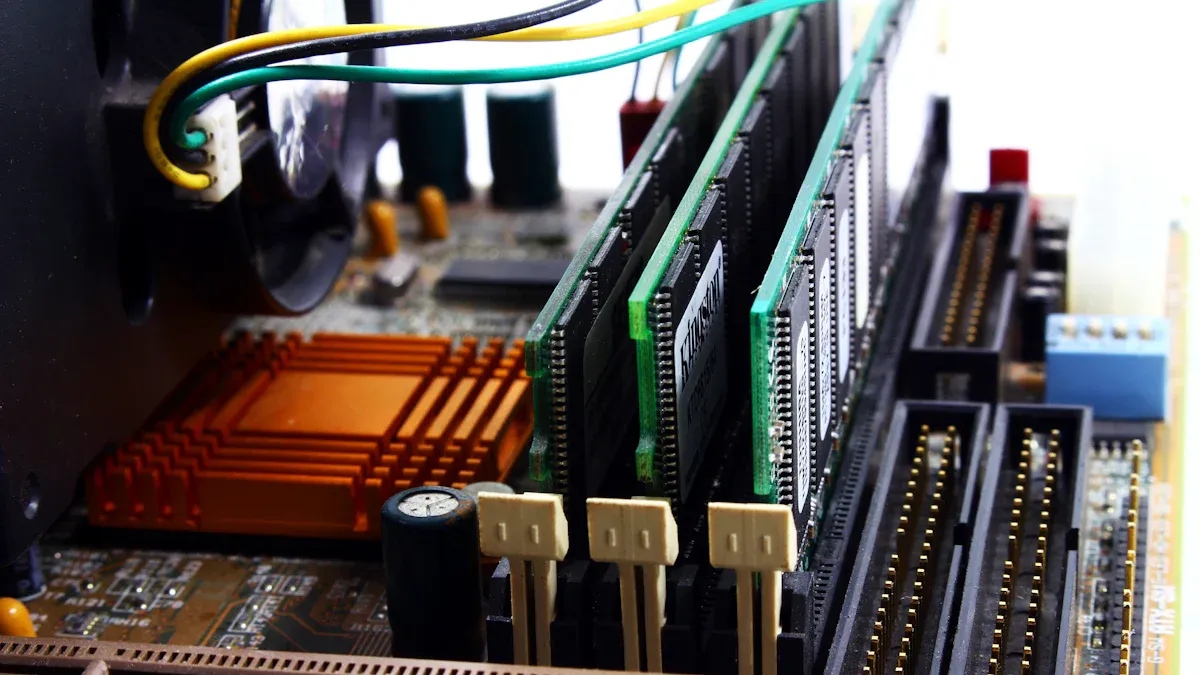
DDR5 Form Factor and System Compatibility
DDR5 MRDIMM modules are designed to fit seamlessly into existing DDR5 slots, ensuring compatibility with standard server architectures. Their form factor adheres to industry specifications, maintaining reliability, availability, and serviceability (RAS) features similar to DDR5 RDIMMs. This compatibility allows MRDIMMs to integrate into systems without requiring significant hardware modifications.
A variety of form factors validate the adaptability of DDR5 MRDIMM across diverse server configurations. These include ECC Registered DIMMs (RDIMMs), Multiplexer Combined Ranks DIMMs (MCRDIMMs), and Multi-Ranked Buffered DIMMs (MRDIMMs). Each form factor offers unique benefits, such as enhanced stability, error correction, or improved performance. The table below highlights these form factors:
Form Factor Type | Description |
|---|---|
ECC Registered DIMM (RDIMM) | Error-correcting memory module for servers. |
Multiplexer Combined Ranks DIMM (MCRDIMM) | Combines multiple ranks for improved performance. |
Multi-Ranked Buffered DIMM (MRDIMM) | Buffered memory for enhanced stability. |
ECC Unbuffered DIMM (ECC UDIMM) | Standard unbuffered memory with error correction. |
ECC Unbuffered SODIMM (ECC SODIMM) | SODIMM variant with error correction. |
DDR5 MRDIMM modules also support a wide range of data rates, from 3600 MT/s to 8800 MT/s, and monolithic DRAM densities up to 64Gb. These specifications ensure compatibility with modern server processors, including Intel's 5th Gen Xeon processors and AMD EPYC CPUs.
Seamless Integration into Existing Infrastructure
Integrating DDR5 MRDIMM into existing server infrastructure requires minimal adjustments. These modules retain the operational characteristics of DDR5 RDIMMs, allowing them to function with memory controllers that support MRDIMM operation. Intel's 6th Gen Xeon Scalable processors already provide native support for MRDIMMs, while AMD EPYC processors are expected to follow suit in future iterations.
The engineering design of DDR5 MRDIMM ensures smooth integration. Features like dynamic feedback equalization (DFE) and pseudo open drain (POD) command/address signaling enhance signal integrity, reducing errors during high-speed operations. The chart below illustrates the compatibility of DDR5 MRDIMM with various system specifications:
Overcoming Challenges in Adoption
Adopting DDR5 MRDIMM technology presents challenges, particularly in systems with physical constraints. DIMM slot limitations in dual-socket designs, such as those used by Microsoft, restrict memory capacity due to chassis width. To address this, CXL memory offers a solution by utilizing PCIe slots and EDSFF E3 slots. This approach increases total available bandwidth while alleviating the burden on DDR5 DIMM slots.
CXL memory not only resolves physical space issues but also enhances system scalability. By leveraging PCIe lanes, it provides additional memory capacity, enabling servers to handle larger workloads efficiently. This innovation ensures that DDR5 MRDIMM adoption remains feasible even in compact server designs, paving the way for broader implementation across industries.
Future Implications of DDR5 MRDIMM for Innovation
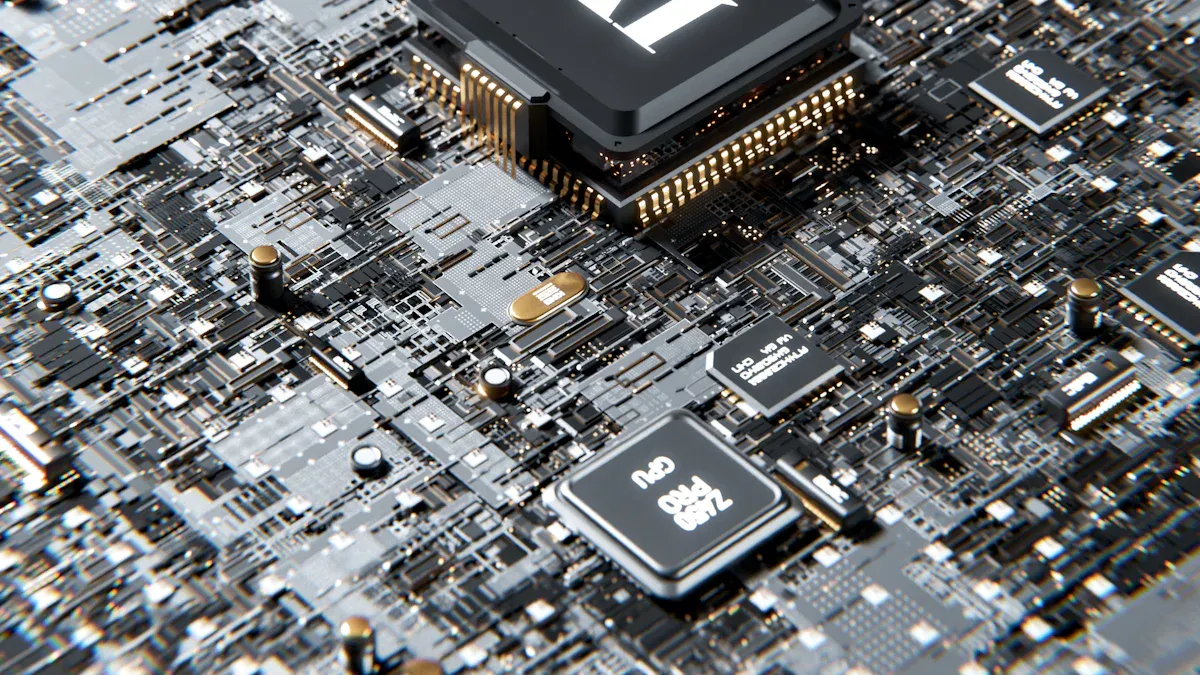
Advancing AI and HPC Capabilities
DDR5 MRDIMM technology is reshaping the landscape of AI and HPC by delivering unprecedented performance improvements. Its ability to enhance memory bandwidth by up to 40% compared to conventional solutions positions it as a critical enabler for advanced workloads. AI inference and retraining processes benefit from improved memory throughput, allowing faster computations and reduced bottlenecks. High-performance computing workloads, such as simulations and data-intensive tasks, experience performance gains of 2.3× to 3.1×, as documented in recent studies.
Workload Type | Performance Improvement |
|---|---|
High-Performance Computing | 2.3×–3.1× higher performance |
Artificial Intelligence | Improved memory throughput for AI inference and retraining |
Collaborative efforts between industry leaders, such as Micron and Lenovo, focus on optimizing power efficiency and heat management. These advancements ensure DDR5 MRDIMM can meet the growing demands of AI-enabled systems while maintaining signal integrity and power efficiency at higher data rates.
Enabling Next-Generation Technologies
DDR5 MRDIMM plays a pivotal role in enabling next-generation computing solutions. Intel Xeon 6 processors, equipped with MRDIMMs, deliver up to 2.3× higher memory bandwidth compared to previous generations. This improvement is essential for handling large AI models and datasets, which require rapid data processing and low latency. Crystal Group integrates DDR5 MRDIMM technology into rugged environments, enhancing memory speeds for mission-critical applications.
Intel Xeon 6 processors introduce MRDIMMs, significantly boosting memory bandwidth and performance for AI and HPC workloads.
Crystal Group leverages DDR5 MRDIMM to improve computing reliability in extreme conditions.
Rambus advances signal and power integrity management, ensuring DDR5 MRDIMM meets the demands of next-generation AI systems.
These innovations highlight DDR5 MRDIMM’s versatility across diverse applications, from enterprise data centers to specialized computing environments.
Long-Term Benefits for the Tech Industry
The adoption of DDR5 MRDIMM technology promises long-term benefits for the tech industry. Its ability to deliver higher bandwidth and lower latency supports the development of AI-driven solutions and HPC advancements. The rise of AI-enabled client systems creates a growing demand for memory modules with optimized power efficiency. DDR5 MRDIMM addresses these needs, ensuring sustainable growth in computing capabilities.
DDR5 MRDIMM’s impact extends beyond immediate performance gains. It lays the foundation for future innovations, enabling breakthroughs in AI, HPC, and cloud computing.
By driving efficiency and scalability, DDR5 MRDIMM positions itself as a cornerstone for technological progress. Its integration into next-generation platforms ensures the industry remains equipped to tackle emerging challenges and opportunities.
DDR5 MRDIMM technology delivers transformative performance benefits that redefine memory solutions for modern computing. Its ability to double data rates and reduce latency positions it as a critical enabler for AI and HPC workloads.
Key Advantages:
Enhanced bandwidth for faster data processing.
Improved energy efficiency for sustainable operations.
Scalable architecture for diverse applications.
DDR5 MRDIMM sets the stage for future innovations in computing. Its adoption will drive advancements in AI, HPC, and cloud technologies, shaping the next era of high-performance systems.
FAQ
What is DDR5 MRDIMM, and how does it differ from traditional DDR5 modules?
DDR5 MRDIMM is a next-generation memory module that doubles data rates by activating two ranks of DRAM simultaneously. Unlike traditional DDR5 modules, it uses on-DIMM buffering and multiplexing to enhance bandwidth and reduce latency, making it ideal for AI and HPC workloads.
How does DDR5 MRDIMM improve energy efficiency?
DDR5 MRDIMM reduces energy consumption per task by optimizing power usage. Its tall form factor enhances cooling, lowering DRAM temperatures by up to 20°C. This design minimizes throttling and ensures sustainable operations for high-performance computing environments.
Can DDR5 MRDIMM integrate into existing server systems?
Yes, DDR5 MRDIMM modules fit standard DDR5 slots and work with memory controllers supporting MRDIMM operation. Leading processors, such as Intel Xeon Scalable and AMD EPYC, already provide compatibility, ensuring seamless integration into modern server architectures.
What applications benefit most from DDR5 MRDIMM technology?
AI model training, inference acceleration, and HPC simulations gain the most from DDR5 MRDIMM. Its high bandwidth and low latency support memory-intensive tasks like real-time analytics, climate modeling, and molecular dynamics simulations.
Is DDR5 MRDIMM scalable for future computing needs?
DDR5 MRDIMM offers scalability by supporting large memory configurations and high core counts. Its adaptability ensures compatibility with next-generation processors and emerging technologies, making it a cornerstone for future AI and HPC advancements.
See Also
Harnessing AI Edge Computing for Robotics with RV1126
Understanding MC9S12DJ256MFUE Specs for Automotive Use
Integrating AEAT-8800-Q24 to Improve Robotics Efficiency
Unveiling Key Automotive Features of FREESCALE MCF5251CVM140
Enhancing Automotive Performance with NXP Microcontrollers for MC9S12
CALL US DIRECTLY
(+86)755-82724686
RM2508,BlockA,JiaheHuaqiangBuilding,ShenNanMiddleRd,Futian District,Shenzhen,518031,CN
www.keepboomingtech.com sales@keepboomingtech.com
